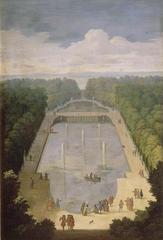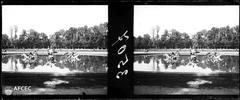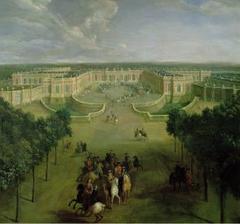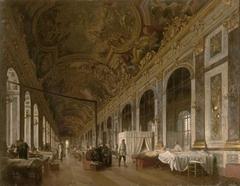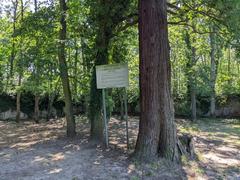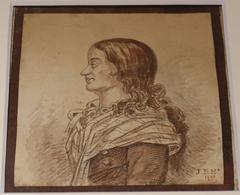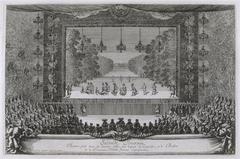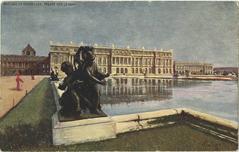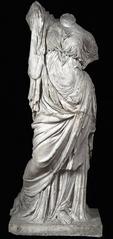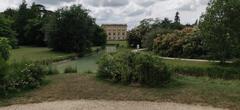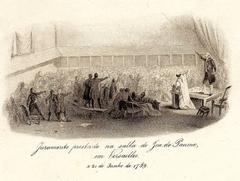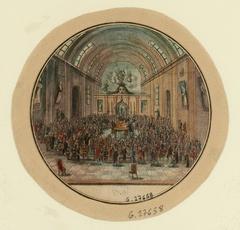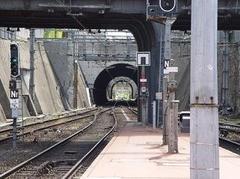
Comprehensive Guide to Visiting Versailles, Yvelines, France
Date: 14/08/2024
Captivating Introduction
Welcome to Versailles, where history and opulence collide in a symphony of grandeur. Imagine walking through a living, breathing painting of unparalleled magnificence. Versailles, once a modest hunting lodge built by Louis XIII in 1623, has transformed into an emblem of absolute monarchy and artistic brilliance under the reign of Louis XIV, the Sun King (Wikipedia). With every step you take through the gilded halls and meticulously manicured gardens, you’re not just witnessing history; you’re experiencing the very essence of French cultural and political power.
Versailles isn’t just an architectural marvel; it’s a testament to human ambition and artistic prowess. The Hall of Mirrors, with its 357 reflective surfaces, captures the sunlight in ways modern technology can only dream of (Wikipedia). The gardens, designed by André Le Nôtre, stretch over 800 hectares, featuring geometric flower beds and elaborate fountains that defy natural order (Sortir à Paris).
As you delve into the history of Versailles, you’ll discover a palace that has witnessed the rise and fall of monarchies, the dawn of revolutions, and the evolution of French art and culture. From the pivotal moments of the French Revolution to its role as a UNESCO World Heritage Site, Versailles stands as a living chronicle of human history (Britannica). Ready to explore the secrets and stories of this iconic destination? Let’s dive into the world of Versailles, where every corner whispers tales of grandeur and power.
Table of Contents
Historical Background of Versailles, Yvelines, France
A Royal Beginning
Imagine a king, a hunting lodge, and a wild wetland that no one thought fit for royalty. In 1623, King Louis XIII built a modest hunting lodge about 19 kilometers (12 miles) west of Paris. By 1634, he had expanded his lodge into a small château, designed by Philibert Le Roy, planting the seeds of Versailles (Wikipedia).
Louis XIV: The Sun King’s Vision
Fast forward to Louis XIV, the Sun King, who reigned from 1643 to 1715 and transformed Versailles into the epitome of absolute monarchy. In 1661, Louis XIV enlisted architect Louis Le Vau, painter Charles Le Brun, and landscape architect André Le Nôtre to turn his modest château into a symbol of power and opulence (Britannica). By 1682, Louis XIV had moved the French court and government to Versailles, making it the de facto capital (Wikipedia).
Architectural Marvels and Artistic Wonders
Versailles isn’t just a palace; it’s an artistic masterpiece. The Hall of Mirrors, designed by Jules Hardouin-Mansart, is a room of 357 mirrors that reflect light in a way that would make any Instagram filter jealous (Wikipedia). The Royal Chapel, completed in 1710, boasts intricate ceiling paintings and a grand organ that still awes visitors today. The gardens, designed by André Le Nôtre, stretch over 800 hectares of meticulously manicured lawns, geometric flower beds, and elaborate fountains. The Grandes Eaux Musicales, with its musical fountain shows, are a must-see (Sortir à Paris).
The Revolution’s Turning Point
Versailles was a stage for one of history’s most dramatic episodes. In May 1789, the Estates-General convened at Versailles to address France’s financial crisis. The outcome? The formation of the National Assembly and the dawn of the French Revolution (Britannica). On October 5, 1789, a crowd of Parisian women marched to Versailles demanding bread. The next day, they stormed the palace, forcing King Louis XVI and Queen Marie Antoinette to move to Paris, ending the monarchy’s stay at Versailles (Wikipedia).
From Neglect to Restoration
Post-revolution, Versailles fell into disrepair. During Napoleon’s era, the Grand Trianon served as his summer residence, but the main palace was largely neglected (Wikipedia). It wasn’t until the 1830s, during the Bourbon Restoration, that significant repairs were made. King Louis-Philippe transformed part of the palace into a museum dedicated to French history, breathing new life into the grand structure (Wikipedia).
A Modern Marvel and UNESCO World Heritage Site
Today, Versailles is a testament to meticulous restoration and preservation. In 1979, the palace and its park were designated a UNESCO World Heritage Site (Wikipedia). Managed by the French Ministry of Culture, Versailles attracts around 15 million visitors annually. The estate includes the main palace, the Grand and Petit Trianon, the Queen’s Hamlet, and the expansive gardens. Visitors can immerse themselves in centuries of history while marveling at the opulence that surrounds them.
Recent Highlights and Future Events
Versailles isn’t just about the past; it’s a vibrant cultural site today. In 2024, it will host events for the Paris Olympic Games, including pentathlon and equestrian events (Sortir à Paris). The History Gallery at the Château de Versailles has been revamped to celebrate its 400th anniversary, featuring over 120 works from the Versailles collections and interactive digital devices (Sortir à Paris).
Visitor Tips
Best Time to Visit
For a picture-perfect visit, aim for spring or autumn. The gardens burst with color, and the crowds are mercifully sparse. Versailles’ charm in these seasons is like a well-kept secret whispered among savvy travelers. And remember, November to March is your golden ticket to fewer tourists and a more intimate experience.
Opening Hours
The Palace doors swing open from Tuesday to Sunday at 9:00 AM, closing at 6:30 PM in high season and 5:30 PM in low season. The Estate of Trianon welcomes visitors from noon to 6:30 PM. Take note: Versailles takes a royal break on Mondays, January 1, and December 25.
Ticket Information
Skip the lines and book your tickets online! The “passport with timed entry” ticket is your all-access pass to the palace, gardens, Trianon Estate, and the Queen’s Hamlet. Priced around €21.50 plus €5 for an audio guide, it’s worth every penny. Fun fact: The Paris Museum Pass won’t let you jump the queue at Versailles.
Avoiding Crowds
Versailles can feel like a royal court on weekends and Tuesdays. For a quieter experience, visit on Wednesdays or Thursdays. Arrive before 9:00 AM or after 3:00 PM to dodge the peak hours. Trust us, the early bird gets the best Instagram shots!
Getting There
Hop on the RER C train from central Paris for a 30-minute ride to Versailles-Rive Gauche station. From there, a short five-minute walk brings you to the palace gates. Alternatively, a taxi or Uber ride costs around €60 and takes about 40 minutes—perfect if you prefer a more leisurely journey.
Navigating the Estate
Versailles is vast, boasting over 2,300 rooms and expansive gardens. Follow the color-coded routes starting from the Dauphin’s Apartment (green) through the Gallery of the History of the Palace (purple). Explore the gardens on foot, or rent a bicycle or golf cart to cover more ground. Insider tip: Watch out for the secret groves and fountains!
Dining Options
- Le Dauphin: Budget-friendly and perfect for a quick snack and coffee. Open Tuesday to Sunday, 10:00 AM to 5:00 PM.
- La Petite Venise: Enjoy rustic Italian cuisine with a shaded terrace. Open daily from 11:45 AM to 6:00 PM (5:00 PM in low season). Reservations recommended!
- Picnic: Bring your own food and picnic in the gardens. Open daily from 8:00 AM to 8:30 PM in high season and until 6:00 PM in low season.
Special Events
From concerts and operas to art exhibits and fireworks, Versailles hosts a plethora of events year-round. Don’t miss the night fountain shows every Saturday evening in summer—it’s like stepping into a fairy tale!
Accessibility
While not all areas are accessible, Versailles offers two levels open to all. Information plaques detail the history of each chamber. Audio guides are €5, but the free mobile app with detailed commentary is a savvy alternative.
Security and Practical Tips
Expect a security check at the grand courtyard entrance. Leave large bags behind and carry only essentials. Comfortable walking shoes are a must to navigate the extensive grounds and cobblestone paths.
Additional Attractions
Don’t rush off! Explore the town of Versailles, including the Musée Lambinet, Marché Notre-Dame, and the King’s Vegetable Garden (Potager du Roi). Each spot offers a unique glimpse into the local culture.
FAQ
Q: What’s the best time to visit Versailles? A: Early morning or late afternoon on weekdays to avoid the crowds.
Q: Are there guided tours available? A: Yes, guided tours are available in multiple languages and offer in-depth insights.
Q: Can I take photos inside the palace? A: Photography is allowed in most areas, but flash and tripods are not permitted.
Call to Action
Versailles is more than just a palace; it’s a living chronicle of French history and a masterpiece of human ambition. From its humble beginnings as a hunting lodge to its transformation into the epitome of absolute monarchy under Louis XIV, Versailles has continuously evolved, reflecting the political and cultural shifts of France (Wikipedia).
The palace has witnessed some of history’s most dramatic episodes, including the French Revolution, which marked the end of the monarchy at Versailles and the beginning of a new era (Britannica). Despite periods of neglect, Versailles has been meticulously restored and preserved, earning its place as a UNESCO World Heritage Site and attracting millions of visitors annually (Wikipedia).
Today, Versailles continues to captivate with its opulent rooms, stunning gardens, and vibrant cultural events. Whether you’re walking through the Hall of Mirrors, exploring the Queen’s Hamlet, or attending a musical fountain show, you’re not just visiting a historical site—you’re stepping into a story that has shaped the world. Ready to uncover the magic of Versailles? Download the Audiala app for expertly crafted audio guides, hidden gems, and deep insights that will enhance your exploration of this iconic destination. Unlock the secrets and stories of Versailles with Audiala and make your visit truly unforgettable.
References
- Palace of Versailles, Wikipedia source url
- Versailles, Britannica source url
- Paris 2024 Olympics: The Château de Versailles, Sortir à Paris source url











